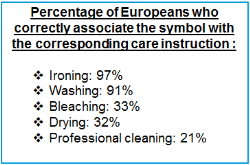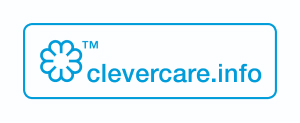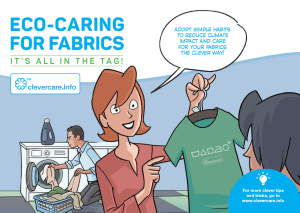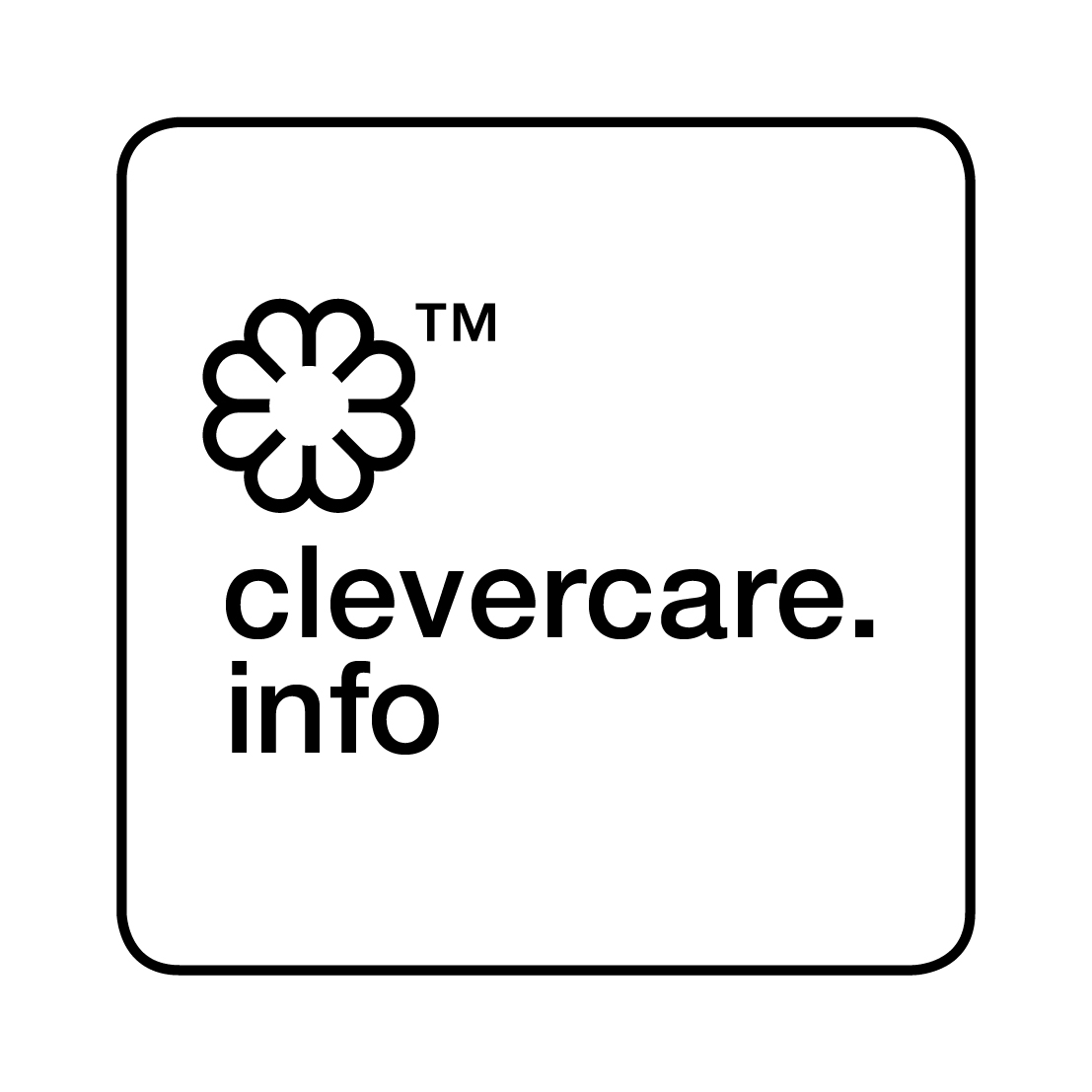IN PARTNERSHIP WITH IPSOS, GINETEX PRESENTS THE OUTCOMES OF ITS EUROPEAN BAROMETER: "EUROPEANS AND TEXTILE CARE LABELLING"

70% of Europeans follow the textile care instructions featured on the labels and
80% admit that they would not (or would rarely) buy clothes without any labels,
While another 84% feel concerned by water and energy savings.
 Download the press release
Download the press release
GINETEX, the international Association for Textile Care Labeling, called upon the French market research company IPSOS, to evaluate the behavior of European Consumers with regards to textile product labels and care symbols. This study, carried out in December 2016, combines the results of six different countries, gathered from a sample of 6,000 people in Germany, England, France, Italy, the Czech Republic and Sweden.
This IPSOS study reveals that 70% of Europeans follow the textile care instructions represented by the symbols. At a pan-European level, 57% even admit that they follow them 'often' and 13% do so 'always'. These figures illustrate the importance of care instructions in the minds of European consumers.
- 38% state that they follow these instructions in order to avoid washing problems such as shrinking, in the first place
- 31% follow them in order to preserve their clothes and keep them longer, as a second reason
Overall, Europeans consider labels as too cumbersome and 62% admit cutting them out: for 74% of them, the labels itch and irritate their skin and for another 55%, they are often too long and uncomfortable. These results can differ from one European country to another.
However, the presence of the label is a real purchasing criterion since 80% of Europeans state that they would never or rarely buy a piece of clothing without a label.
Internet and smartphones: true virtual partners for textile labels
Here's from a positive perspective: when solving a specific washing issue or when faced with symbols that they don't understand, 53% of respondents are curious about their meaning and automatically look them up on the Internet: 39% use a computer and 21% use their smartphone.
Ironing and washing symbols are the most recognized by Europeans!
The study reveals that the ironing and washing symbols are the ones that are best understood by our neighbors: scoring respectively 97% and 91%.
|
The three other symbols remain unclear to consumers:
- The professional cleaning symbol is the least understood with 21% Europeans who interpret it properly
- 39% do not know what the bleaching symbol stands for
- 45% do not know what the drying symbol means
The same is true for special features such as underscores under the symbols, noticed by only 1 out of 4 Europeans.
On the other hand, the dots inside the ironing and/or the dryer drum symbols go more noticed, with one out of two Europeans (54%) who actually see them.
|
 |
Eco-care, a major issue for European consumers!
The IPSOS study reveals that 84% of Europeans feel concerned about water and energy savings. And among Europeans who feel concerned, 90% take specific eco-actions when caring for their textile products.
It is worth mentioning that European consumers already seem to adopt the proper eco-habits when caring for their textiles.
- 62% choose "natural drying as soon as possible"
- 61% do "mainly low temperature washes"
- 44% use the "Eco program"

GINETEX values eco-caring for textiles, in particular via its clevercare.info logo, already used by a number of major international brands, in addition to the 5 textile-care symbols. With its own site dedicated to the general public, this logo's objective is to raise awareness and to inform consumers about the simple and easy actions to adopt for textile eco-caring.
"The results of this GINETEX-IPSOS barometer are positive and encouraging. They reflect the fundamental role of GINETEX and that of our international committees who work to increase the understanding of textile care symbols. Our mission is to work on a long-term basis - an effort also confronted with obstacles such as the misinterpretation of symbols and the removal of labels. Together with our member brands, we must continue to reinforce our actions with the general public to ensure all our symbols (and special features) are understood by all, throughout the world. Our permanent goal of standardizing and harmonizing our textile care labeling system worldwide contributes to this improvement every day", says Adam Mansell, President of GINETEX.
Study Methodology:
In this study, a sample of 6,000 people from Ipsos' Online Access Panel, aged between 18 and 65 and representative of the European population was surveyed for the following countries: Germany, Great Britain, France, Italy, the Czech Republic and Sweden. The survey was conducted online in December 2016.
About GINETEX
GINETEX, the International Association for Textile Care Labelling, was first founded in Paris in 1963 following several international Symposiums for Textile Care Labelling at the end of the 1950’s. GINETEX has devised an internationally applicable care labelling system for textiles based on symbols. The pictograms used are registered trademarks and are the GINETEX property. The care labelling system gives consumers and textile companies the correct information on the care treatment of textile products. The processes indicated by the symbols will avoid any irreversible damage to the product. GINETEX is composed by 22 national organisation members. These organisations represent all interested parties concerned with textile care and labelling.
GINETEX Contact
Pascale FLORANT
Secretary General
+33 (0)1 47 56 31 71
Tags : Care - Textile - Europe - research









.jpg)



